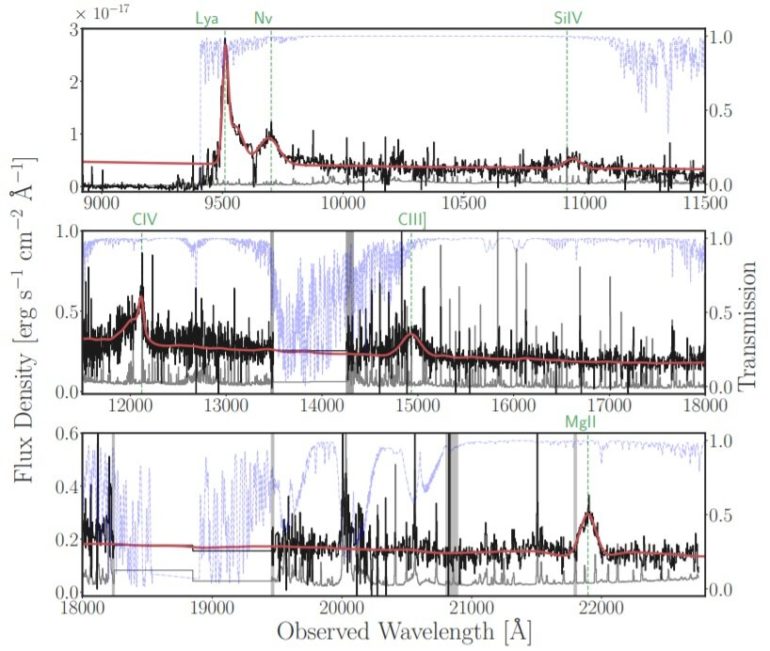In a recent study, an international team of astronomers presents the discovery of PSO J172.3556+18.7734—a highly accreting radio-loud quasar at a redshift of approximately 6.82. This is the most distant radio-loud quasar known to date. The finding is detailed in a paper published March 4 on arXiv.org.
Quasars, or quasi-stellar objects (QSOs), are extremely luminous active galactic nuclei (AGN) containing supermassive central black holes with accretion disks. Their redshifts are measured from the strong spectral lines that dominate their visible and ultraviolet spectra.
Astronomers are especially interested in finding new high-redshift quasars (at redshift higher than 5.0) as they are the most luminous and most distant compact objects in the observable universe. Spectra of such QSOs can be used to estimate the mass of supermassive black holes that constrain the evolution and formation models of quasars. Therefore, high-redshift quasars could serve as a powerful tool to probe the early universe.
Now, a group of astronomers led by Eduardo Bañados of the Max Planck Institute for Astronomy in Heidelberg, Germany, reports the finding of another high-redshift quasar—PSO J172.3556+18.7734 (or P172+18 for short).
“We confirmed P172+18 as a z ∼ 6.8 quasar on January 12, 2019 with a 450 s spectrum using the Foldedport InfraRed Echellete (FIRE) spectrograph in prism mode at the Magellan Baade telescope at Las Campanas Observatory,” the researchers explained.
P172+18 was identified at a redshift of 6.823, what makes it the most distant radio-loud source found to date. So far, only three radio-loud sources had been reported at redshifts above 6.0, with the most distant being a quasar at a redshift of about 6.18.
According to the paper, P172+18 has a black hole mass of about 290 million solar masses and an Eddington ratio of around 2.2. By comparing P172+18 to similar objects, the researchers found that the newly detected source is among the fastest accreting quasars at both low and high redshift.
P172+18 was found to have a large ionized intergalactic medium around what suggests that the object’s lifetime exceeds the average lifetime high-redshift quasars with redshifts above 6.0. Moreover, the study found that the radio spectrum of P172+18, between 1.4 and 3.0 GHz is steep, and that this quasar has a radio-loudness parameter at a level of about 91.
Summing up the results, the scientists noted that P172+18 is an interesting target for further observations.
“P172+18, in particular, is an ideal target to investigate the existence of extended X-ray emission arising from the interaction between relativistic particles in radio jets and a hot cosmic microwave background (CMB). This effect is expected to be particularly strong at the highest redshifts because the CMB energy density scales as (1 + z)4 and as a result its effective magnetic field can be stronger than the one in radio-lobes,” the authors of the paper concluded.
Most distant quasar with powerful radio jets discovered
More information:
The discovery of a highly accreting, radio-loud quasar at z = 6.82, arXiv:2103.03295 [astro-ph.CO] arxiv.org/abs/2103.03295
2021 Science X Network
Citation:
The most distant radio-loud quasar discovered (2021, March 15)
retrieved 15 March 2021
from https://phys.org/news/2021-03-distant-radio-loud-quasar.html
This document is subject to copyright. Apart from any fair dealing for the purpose of private study or research, no
part may be reproduced without the written permission. The content is provided for information purposes only.



